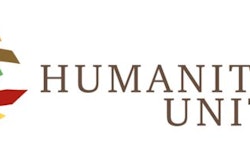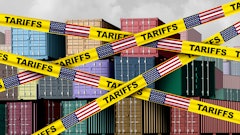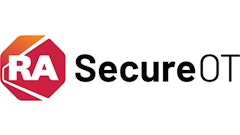There are slaves in your supply chain. Yes, you read that right. According to the International Labour Organization (ILO) there are more than 20 million forced laborers around the world today. And it is likely that some of those slaves work for you or your suppliers. Recent high-profile cases have uncovered forced labor in nearly every industry from conflict minerals from the Congo that have made their way into our most common high-tech devices to indentured servitude in commercial fishing in New Zealand to child laborers in the cocoa and coffee industries in Latin America and Africa.
Slave labor knows no boundaries. And it occurs in the most surprising of places – even our own backyard. Case in point: one of the world’s largest food service companies dumped one of its major tomato suppliers in Florida when it uncovered that it was holding workers without pay and against their will between harvesting seasons so that the migrant workers wouldn’t leave.
Forced labor is an equal opportunity offender. And it can’t be ignored. The Dodd-Frank Act, enacted in 2012, mandates that companies determine whether their sub-tier suppliers are sourcing vital minerals like tantalum, tin, gold, or tungsten from war-torn central Africa. UK officials have already begun prosecuting violators of “modern day slavery” rules they passed in 2010. The White House has committed to stepping up policing of anti-slavery measures already on the books and to updating federal acquisition regulation (FAR). And the State Department has called on leaders from some of the world’s most recognizable brands to share solutions to root out and mitigate what U.S. Secretary of State John Kerry described as “the single greatest challenge of our generation.”
What can procurement do to eradicate slave labor? Plenty. The same networks and technology underlying them that are transforming key business processes such as buying, selling and managing cash can also be used to eradicate forced labor from the supply chain.
The power of networks lies in their ability to connect people and enable the sharing of information in massively scalable ways. Just like Amazon or Netflix uses the information on their network to give members ratings and guidance on which books, products, or films to buy, business networks can provide recommendations on what to source, when, and from which suppliers and deliver a new level of transparency into supplier capabilities, performance, and social and environmentally responsible practices.
Procurement organizations using such networks can, for instance, be alerted to potential future risks in their supply chain by triangulating myriad inputs—like performance ratings, payment history, etc. We also offer alternative sources of supply to help mitigate these risks.
They can get a view into what’s going into their products through non-profit organizations like Made in a Free World. Dedicated to ridding all supply chains of forced labor, the non-profit has created an incredibly powerful database that maps the bill of materials of countless number of products and services—from cell phones and hand-held electronics to fish and agriculture—right down to raw materials and labor inputs and cross-references this information with hotspots where there is a high propensity for the use of forced and child labor risks.
And more important, they can access a framework for doing something about it. Working together with Ariba and procurement leaders from some of the world’s largest corporations and government agencies, Made in a Free World has developed a series of playbooks designed to help companies detect forced labor in their supply chains and take action to remediate it.
Talking about slavery in the supply chain is a dicey proposition. And many companies decline to participate in conversations or share insights and intelligence that could be used to help solve the problem, fearing they will get beat up for doing so. But that’s the wrong approach.
Business networks provide the connectivity and intelligence needed to make better and more informed decisions. And, by leveraging them, procurement can take actions to end human trafficking and make the world a better place. It’s not just a huge opportunity. It’s a responsibility.
Keep Your Suppliers Close—And Their Suppliers Closer
Managing supply risk is getting more complicated by the day. It used to be that you only had to monitor your own suppliers. But as supply chains have become longer and more global, you now need to keep tabs on their suppliers as well.
The road is littered with the remnants of companies that have failed because they didn’t anticipate and take steps to mitigate the risks inherent in today’s multi-tier supply chains. But anticipating risk is only half the battle. To effectively manage complex supply networks requires three things:
- The ability to predict the future with accuracy — leveraging input from real-time market dynamics and historical market trends from a network of partners and peers.
- The competency to assess a myriad of potential actions and identify those with the highest propensity for success — based on analyzing the actions and results of other enterprises or individuals that were exposed to similar conditions in the past.
- The flexibility to quickly act to capitalize on these predictions — by rapidly adapting businesses processes to execute the optimal action in advance of market changes or the competition.
Traditional technologies can’t enable this. But network-based solutions can. Just as consumers tap into personal networks to learn, share and shop better, companies are harnessing the ‘knowledge of crowds’ and insights from business networks to detect risks and market changes and chart recommended courses of action that have tested and proven by others in the community. And to execute a new approach to risk management through which they can pinpoint potential risks that may be hidden deep in their supply network and head off trouble before it happens.
Procurement, for instance can be alerted to potential future risks in the sub-tier supply chain by triangulating a myriad of real-time supplier performance inputs (e.g., change in payment status, loss of a key customer, change in leadership, commodity price or supply fluctuations) crossed-referenced historical results when such patterns exist. These alerts can be supplemented with recommended responses or alternative suppliers based on community-generated ratings and buying patterns of other like-buyers on a business network.
As the saying goes, “What you can’t see, can hurt you.” Armed with the right technology, intelligence and insights and connected to the right networks, companies can not only see the future, but seize it to mitigate risk and create business advantage.


















